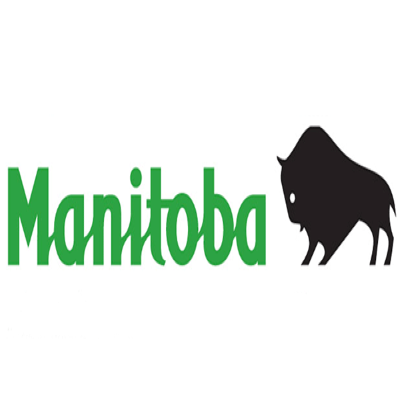farming
Type of resources
Available actions
Topics
Keywords
Contact for the resource
Provided by
Years
Formats
Representation types
Update frequencies
status
Scale
Resolution
-

[Archived] Deployment locations and configuration details of Acoustic Doppler Current Profilers (ADCPs) included in the Centre for Marine Applied Research’s (CMAR) “Current Data” county datasets. This data has not been maintained or updated. Users looking for the latest information should refer to Nova Scotia Current and Wave Data: Deployment Information https://data.novascotia.ca/d/uban-q9i2.
-

The data, created in ArcGIS, represents an assessment of air quality risk for the agricultural area of Alberta in 2005. Agricultural activities that may have some influence on air quality manure production (odour) and cultivation intensity (particulate matter). The airsheds of the agricultural region of Alberta are considered to be uniform in their physical susceptibility to risk from agricultural activities. Air quality risk is a useful measure for those concerned about health, safety and nuisance issues related the quality of air in agricultural areas. Awareness of where agricultural activities related to livestock production and intensive cultivation are located, may be useful for people with health or nuisance related concerns. Blowing soil can cause respiratory problems and can reduce visibility on roads and highways. Dust from farm traffic can be a concern during peak agricultural activity, such as harvesting or manure hauling. Frequent strong odours can be unpleasant nuisance for neighbours. In areas of greater air quality risk, environmental farm planning can help to address the issues and provide solutions. Practices including pen/barn maintenance, method of manure application, manure storage, composting, adjusting, feed rations and reducing or eliminating tillage can be looked at in an environmental farm plan.
-

The Grain Elevators in Canada – 2017 dataset maps the list of grain elevators in Canada as provided by the Canadian Grain Commission (CGC). The elevators have been located as much as possible to an actual location rather than generalizing to the station name centroid. Additionally car spot information from CN, CP and the grain companies has been added where this has been published. This dataset attempts to provide a temporal and geographical extent of the grain elevators in Canada.
-

The Grain Elevators in Canada - 2020 dataset maps the list of grain elevators in Canada as provided by the Canadian Grain Commission (CGC). The elevators have been located as much as possible to an actual location rather than generalizing to the station name centroid. Additionally car spot information from CN, CP and the grain companies has been added where this has been published. This dataset attempts to provide a temporal and geographical extent of the grain elevators in Canada.
-

A web application that shows the location of businesses in Manitoba that offer food and bioproducts storage and distribution services. This web application shows the geographic location of Manitoba businesses that offer food and bioproducts storage and distribution services. This list is not exhaustive and does not constitute a recommendation for services. For more information, visit the Manitoba Agriculture website. This application uses the food and bioproducts warehousing and distribution services element layer and the Manitoba food and bioproducts storage and distribution services map. **This third party metadata element was translated using an automated translation tool (Amazon Translate).**
-

The national agricultural ecumene includes all dissemination areas with 'significant' agricultural activity. Agricultural indicators, such as the ratio of agricultural land on census farms relative to total land area, and total economic value of agricultural production, are used. Regional variations are also taken into account. The ecumene is generalized for small-scale mapping. A new version of the agricultural ecumene is generated every census years (in vector format) since 1986. This file was produced by Statistics Canada, Agriculture Division, Remote Sensing and Geospatial Analysis section, 2017, Ottawa.
-

The Head Tax Permit Zone is comprised of three polygons for determining which zone a head tax permit falls in. These zones are used to apply the rental rate that forest grazing reserve permits, head tax permits (HTP), and provincial grazing reserves (GRR) are charged (Ministerial Order 01/2020).
-

The Grain Elevators in Canada - 2023 dataset maps the list of grain elevators in Canada as provided by the Canadian Grain Commission (CGC). The elevators have been located as much as possible to an actual location rather than generalizing to the station name centroid. Additionally car spot information from CN, CP and the grain companies has been added where this has been published. This dataset attempts to provide a temporal and geographical extent of the grain elevators in Canada.
-

Mapping application offering hourly weather updates provided by Manitoba Agriculture. Manitoba Agriculture's weather program operates over 100 weather stations that provide regularly updated data on air temperature, relative humidity, precipitation, wind speed and direction, soil temperature, soil temperature, soil moisture, and barometric pressure. Warning: The Manitoba Agriculture Weather Program reports data at intervals of 15 minutes, 1 hour, and 1 day. However, values may change due to corrections, calibrations, or disturbances caused by equipment malfunction. The data shown has undergone minimal quality control. The Manitoba Agriculture Weather Program provides data “as is” and disclaims all warranties, express or implied. In no event will the Manitoba Agriculture Weather Program be liable for any direct or indirect, incidental, incidental, consequential, special, or exemplary damages resulting from the use or misuse of the data or products and services derived from the data. For inquiries, please email agriculture@gov.mb.ca. **This third party metadata element was translated using an automated translation tool (Amazon Translate).**
-

Map showing locations of community kitchens available for rent in Manitoba. This map shows the locations of community kitchens available for rent in Manitoba. Each kitchen has a Food Service Establishment permit issued by Manitoba Health, and is a suitable facility to produce value-added food products for sale. For more information visit Manitoba Agriculture. This map is used in the Commercial Community Kitchens in Manitoba application.
 Arctic SDI catalogue
Arctic SDI catalogue